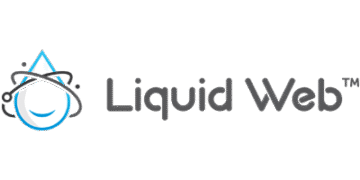Can financial success and positive change truly coexist? With $228 billion already deployed in impact investing globally—and projections reaching $2 trillion by 2025—the answer is a resounding yes. But as this sector grows, so does the need for rigorous measurement to prove both financial and social environmental value.

The Rise Fund and Bridgespan Group pioneered the Impact Multiple of Money (IMM) method, demonstrating $2.50 in social return per $1 invested. This breakthrough addresses concerns about “impact washing” while aligning with frameworks like SROI and the UN Sustainable Development Goals.
For investors and entrepreneurs, standardized metrics like IRIS+ offer clarity. Collaborative tools and success stories—from Acumen to Patamar Capital—prove that evidence-based strategies drive meaningful results. The future of business lies in balancing profit with purpose.
Key Takeaways
- The impact investing market is expanding rapidly, demanding reliable valuation methods.
- IMM and SROI frameworks bridge financial returns with societal benefits.
- Standardized tools like IRIS+ combat greenwashing and ensure transparency.
- Global initiatives align impact strategies with UN Sustainable Development Goals.
- Collaboration strengthens credibility and scales measurable change.
Understanding ROI in Impact Investing
The modern investment landscape demands more than just monetary gains. Investors now prioritize dual returns—financial profitability paired with measurable social or environmental outcomes. This blended value proposition redefines success.
Traditional calculations focus solely on profit margins. Impact strategies, however, track outcomes like reduced carbon emissions or improved education access. The return extends beyond shareholders to communities.
The ROI Methodology’s 5-level framework evaluates programs rigorously:
– Reaction: Stakeholder feedback
– Learning: Knowledge gained
– Application: Behavioral changes
– Impact: Tangible societal benefits
– ROI: Financial and social yield
HOPE Ministries exemplifies this approach. Their job training initiative delivered a 300% return—combining income growth for participants with reduced public assistance costs. Wharton research confirms such measurement remains a top industry hurdle.
Quantifying impact requires aligning inputs (funds), activities (programs), and outputs (direct results) with long-term outcomes. Tools like IRIS+ standardize metrics, ensuring transparency for investors.
Why Measuring ROI in Impact Investing Differs from Traditional Investing
Financial spreadsheets can’t capture healed communities or cleaner rivers. Traditional investors track quarterly earnings, while impact portfolios demand next-generation measurement for social dividends.

Time horizons create the first divergence. Market returns materialize in years, but educational reforms or ecosystem recovery may take decades. The Omidyar Network highlights this mismatch in emerging market business cases.
Attribution poses another hurdle. When multiple funders support a clinic expansion, who claims the health outcomes? GIIN reports 75% of investors struggle with this complexity.
Evidence standards vary widely. Wharton reveals 68% of asset owners accept stories alongside data. This contrasts sharply with traditional performance audits requiring hard numbers.
Budget allocations tell the story. Conventional analysis costs under 1% of assets, while impact measurement consumes 5-10%. This reflects the intensive approach needed to quantify change.
The world needs both frameworks. Annual reports satisfy shareholders, but longitudinal studies prove a microfinance program’s generational effects. Smart business leaders now bridge these methods.
Key Methodologies for Measuring Impact and Financial Returns
Investors increasingly seek methodologies that quantify both financial and societal gains. The Impact Multiple of Money (IMM) and Social Return on Investment (SROI) lead this transformative shift. These frameworks turn abstract change into actionable data.
IMM evaluates six factors: relevance, evidence base, economic value, risk adjustment, terminal value, and return calculation. Developed by The Rise Fund, it predicts outcomes before investment. Bridgespan Group’s 4-phase due diligence process strengthens this evaluation.
SROI, created by REDF, measures post-investment results. It follows seven principles, including stakeholder engagement and transparency. The formula: (Social Value Created / Investment Cost) × 100%. This research-backed method tracks real-world effects.
The Rockefeller Foundation’s impact-weighted accounts initiative reshapes corporate reporting. It assigns monetary values to social and environmental outcomes. Meanwhile, GIIN’s IRIS+ system standardizes metrics across 15 UN SDG sectors.
Companies like Patagonia and Ben & Jerry’s use B Corp certification to benchmark impact. Their operational strategies align profit with purpose. Together, these tools create a unified language for measurable change.
How to Measure ROI in Impact Investing: A Step-by-Step Approach
Quantifying change demands more than intuition—it requires systematic analysis. We unlock potential through evidence-based strategies, blending financial rigor with social transformation. Standardized practices ensure consistency across projects, from affordable housing to healthcare initiatives.

Assess Relevance and Scale of Impact
The Rise Fund’s 2.5X IMM threshold sets a benchmark. Projects must demonstrate scalable benefits, like reducing homelessness or improving education access. An affordable housing example shows how 100 units can uplift entire neighborhoods.
Identify Evidence-Based Outcomes
Prioritize data hierarchy: randomized trials > longitudinal studies > expert estimates. Robin Hood Foundation’s $1→$10 poverty metric stems from verified outcomes. We validate results before scaling solutions.
Estimate Economic Value to Society
WHO’s DALY metrics monetize health improvements. A clinic reducing disease burden might yield $50,000 per life-year saved. Longer time horizons capture compounding community effects.
Adjust for Risks and Realization Probability
Use the formula: Adjusted Impact = Estimated Value × (1 – Risk %). A 20% risk of policy delays reduces a $1M projected benefit to $800K. Portfolios balance high-risk innovations with stable performers.
Calculate Social Return per Dollar Invested
Terminal values account for persistence. A 5-year model might show $3.50 social return for every $1 invested in clean energy. Transparent calculations build investor trust and drive capital toward meaningful change.
Common Challenges in Impact Measurement
Tracking real change requires more than spreadsheets and annual reports. Even with advanced tools, companies face persistent hurdles in validating social and environmental progress.
Emerging markets often lack baseline data, making comparisons difficult. A Wharton research study reveals 72% of funds use operational metrics as proxies—a temporary fix needing long-term solutions.
System-level changes introduce attribution challenges. When multiple investors fund clean water initiatives, quantifying individual contributions becomes complex. TPG’s blockchain verification system offers one way forward, creating tamper-proof impact records.
Layered funding structures risk diluting outcomes. The average 18-month lag in outcome measurement further complicates real-time adjustments. Global Reporting Initiative standards help, yet only 14% of reports currently meet them.
Capacity constraints remain a barrier. Smaller organizations often lack resources for rigorous data collection. Collaborative platforms like 60 Decibels demonstrate how shared tools can work across sectors.
Overcoming these obstacles demands innovation and patience. As the field matures, standardized approaches will bridge gaps between intention and measurable change.
Tools and Frameworks for Effective Impact Evaluation
The right tools transform abstract intentions into measurable outcomes. Across the impact ecosystem, standardized frameworks create shared languages for progress. We now examine two pioneering systems reshaping capital allocation.
Impact Multiple of Money: Private Equity Precision
The Rise Fund’s IMM methodology delivers rigor to private markets. This approach evaluates six dimensions, from economic value to risk adjustment. Implementation boosted impact alignment by 40% across portfolios.
IMM excels in growth-stage investments with quantifiable outputs. A clean energy project might demonstrate $3 saved per kilowatt-hour generated. The framework’s predictive power helps investors allocate money strategically.
Social Return on Investment: Nonprofit Clarity
SROI adoption surged 300% among European funds since 2018. This stakeholder-centric evaluation measures outcomes like educational attainment or health improvements. REDF’s seven principles ensure methodological consistency.
Acumen’s Lean Data approach adapts SROI for resource-limited settings. Mobile surveys capture beneficiary feedback efficiently. Such innovations make robust analysis accessible to smaller organizations.
GIIN’s Impact Toolkit helps align metrics with SDGs. UBS Optimus Foundation pairs this with outcome-based financing. Meanwhile, Salesforce’s Impact Cloud generates real-time reports through customizable dashboards.
These complementary frameworks prove that systematic evaluation drives meaningful success. Whether through IMM’s financial lens or SROI’s community focus, measurement transforms capital into change.
Real-World Examples of Impact ROI in Action
Global innovators demonstrate measurable social returns alongside financial gains. These examples transform theoretical frameworks into lived community benefits.
d.light’s solar solutions deliver $9 in social value for every $1 invested. Over 100 million people gain energy access through their affordable systems. This case proves renewable energy can uplift entire regions economically.
Babban Gona’s agritech model achieves 2.8X IMM for Nigerian smallholder farmers. Their services boost yields by 238%, creating generational wealth. The program showcases agriculture’s power to reduce poverty at scale.
Livongo’s AI health coaching generates 3.1X IMM in diabetes management. Members experience 16% fewer hospitalizations, saving $88 per patient monthly. This health innovation merges technology with preventative care.
Root Capital’s $1.2B agricultural lending impacts 1.5M farmers across Africa and Latin America. Their approach increases household incomes by 144% on average. Rural communities gain stability through structured financing.
Teach For America demonstrates $4.80 in lifetime earnings increase per $1 invested. Alumni achieve 33% higher graduation rates than peers. Education becomes a proven pathway for economic mobility.
WaterEquity’s WASH investments yield 7X returns in productivity and health outcomes. Their portfolio provides clean water to 5 million people. Communities spend fewer sick days and more time generating income.
LeapFrog Investments tracks 157M beneficiaries of financial inclusion services. This number represents families gaining insurance and savings tools for resilience. Their work proves inclusive finance drives systemic change.
These companies validate impact measurement’s transformative potential. From solar panels to classroom gains, quantifiable results build investor confidence and community trust.
Conclusion
The future of sustainable finance hinges on transparent, data-driven strategies. With 90% of organizations adopting shared measurement principles, the sector moves toward unified goals. Third-party verification surged 40% in 2023, signaling growing trust in impact validation.
AI-powered forecasting will redefine standards by 2026. Integrated accounting systems merge financial and social metrics, creating holistic performance views. Cross-sector collaboration unlocks open-source data platforms, accelerating progress.
Aligning with UN SDGs remains critical for scaling the $2T market. Professionals must master impact evaluation as a core skill. Together, we build a world where capital drives measurable change—the ultimate success for people and planet.
FAQ
What makes impact investing different from traditional investing?
Impact investing balances financial returns with measurable social and environmental benefits. Unlike traditional investing, success isn’t solely based on profit but also on positive change.
Which frameworks help quantify social and financial performance?
Tools like Social Return on Investment (SROI) and Impact Multiple of Money (IMM) translate outcomes into tangible metrics, aligning stakeholder expectations.
How do investors assess the relevance of an impact initiative?
By evaluating alignment with United Nations Sustainable Development Goals (SDGs) or industry benchmarks, investors ensure initiatives address critical global challenges.
What challenges arise when tracking impact ROI?
Data scarcity, attribution complexities, and long-term measurement timelines often complicate evaluations. Standardized metrics like IRIS+ mitigate these hurdles.
Can you share a real-world example of successful impact measurement?
Acumen’s investment in d.light solar solutions demonstrated a 10x social return by improving energy access for 100 million people while achieving profitability.
Why adjust for risk in impact calculations?
Discounting for risks—like policy shifts or implementation delays—ensures realistic projections. Methods like expected return modeling enhance accuracy.
How do companies integrate impact into financial reporting?
Leaders like Patagonia and Danone use blended value reports, combining profit statements with environmental and social KPIs for transparency.




